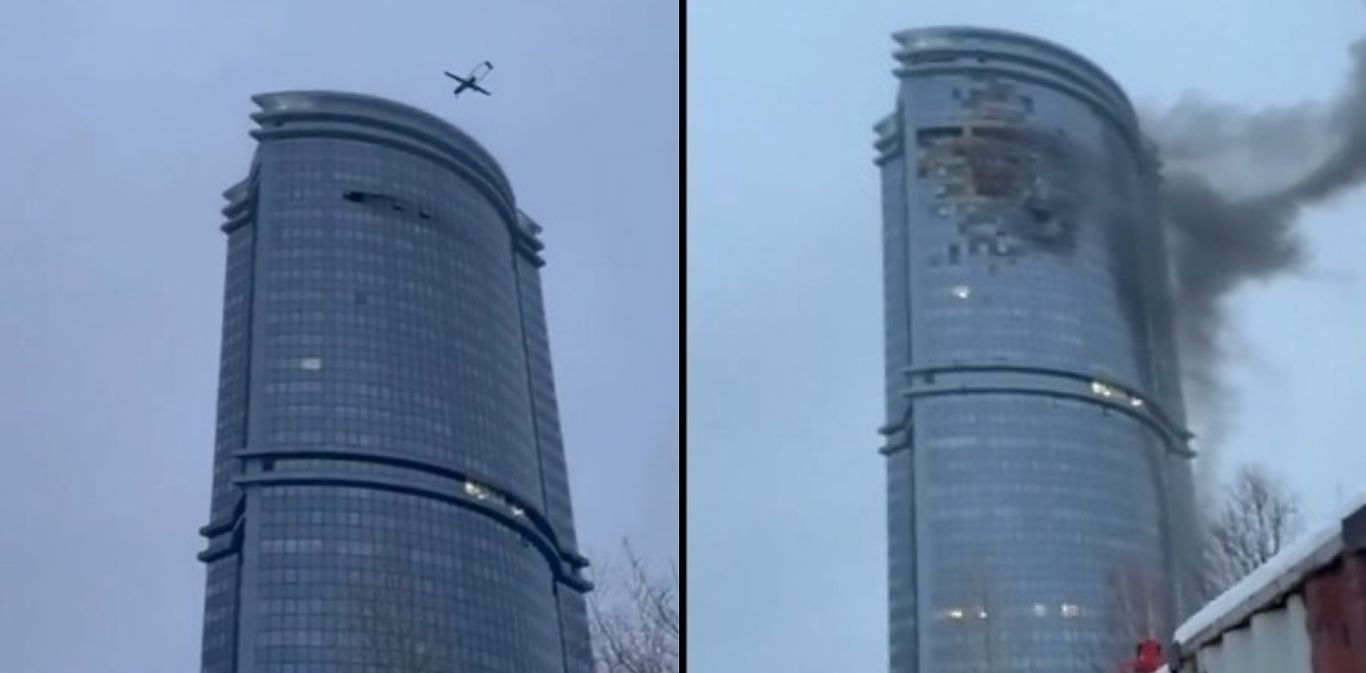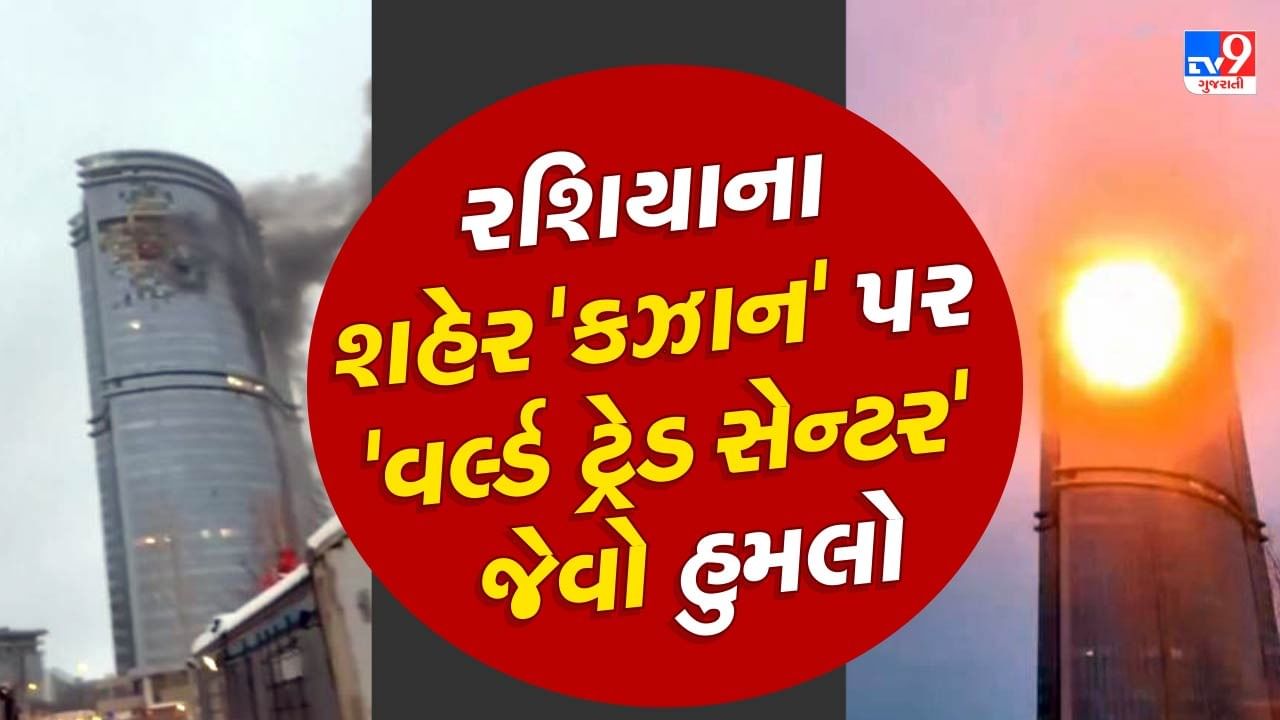Kazan drone attack: The recent incident in Kazan, Russia, involving a drone attack, has raised significant concerns about the vulnerability of urban areas to this emerging form of warfare. This event necessitates a thorough examination of the circumstances surrounding the attack, the potential perpetrators, and the broader implications for regional and global security. Understanding the technological capabilities involved and the strategic significance of Kazan as a target is crucial for assessing the risk and developing effective countermeasures.
This analysis will delve into the specifics of the Kazan drone attack, exploring the timeline of events, the potential damage and casualties, and the technological aspects of the drone used. We will also investigate potential actors, analyze the response of authorities, and consider the international implications. Finally, we will examine future scenarios and the potential impact of increased drone usage on civilian populations and infrastructure.
The Kazan Drone Attack: An Analysis

Reports of a drone attack on Kazan, a significant city in Tatarstan, Russia, have raised concerns about escalating tensions and the evolving nature of asymmetric warfare. This analysis examines the event, its implications, and potential future scenarios.
The Event: Kazan Drone Attack Overview
Reports emerged of a drone incident in Kazan, although details surrounding the exact circumstances remain somewhat fragmented and subject to official clarification. Initial reports suggested damage to property, with varying accounts of the extent of the damage and any potential casualties. The timeline of events is still being pieced together, with initial reports surfacing on [Insert Date of Initial Reports] followed by subsequent updates offering more (or less) clarity on the incident’s specifics.
Official statements from Russian authorities are crucial in fully understanding the nature and scale of the event.
Geographic Context and Target Selection
Kazan’s strategic importance as a major city in Russia, a significant industrial and transportation hub, makes it a potentially attractive target for drone attacks. Potential targets within Kazan include government buildings, infrastructure critical to transportation or communication networks, and high-profile industrial sites. The specific location of the reported attack likely reflects a combination of factors, including the target’s vulnerability, the drone’s operational range, and the attackers’ intent.
The recent drone attack on Kazan highlights the evolving threat of unmanned aerial vehicles. This incident underscores the need for robust counter-drone technologies, a stark contrast to the more celebratory use of drones, such as those showcased at the impressive florida drone show. While the Florida event demonstrates the potential for dazzling displays, the Kazan attack serves as a sobering reminder of the potential for malicious drone deployments.
| Target Area | Vulnerability Description | Geographic Considerations | Potential Impact |
|---|---|---|---|
| Government Buildings (e.g., Kremlin, regional administration) | High profile, symbolic targets; potentially offering propaganda value to attackers. Security measures may vary. | Central location, potentially difficult to access discreetly. | Significant political and symbolic impact; potential for casualties. |
| Transportation Hubs (Airport, Railway Station) | High concentration of people and potential for widespread disruption. | Accessibility varies depending on the specific hub and its security measures. | Significant disruption to transport; potential for mass casualties. |
| Industrial Complexes (Oil refineries, chemical plants) | Potential for significant material damage and environmental consequences. | Often located on the outskirts, potentially easier to approach undetected. | Economic damage, environmental pollution, potential for casualties. |
| Communication Infrastructure (TV/Radio towers) | Disruption of communication networks could have widespread consequences. | Location often elevated, potentially offering advantages for drone operation. | Significant disruption to communication networks; potential for secondary effects. |
Drone Technology and Capabilities
The type of drone used likely possessed a sufficient range to reach Kazan from a suitable launch point, and a payload capacity capable of delivering the reported damage. The technological advancements in drone technology, particularly in areas such as autonomous navigation, extended range, and improved payload delivery systems, have made such attacks increasingly feasible. The drone likely incorporated features allowing for precise targeting and possibly some level of evasion of detection systems.
Attribution and Responsibility, Kazan drone attack
Determining responsibility for the attack requires a thorough investigation. Several actors, including various non-state actors or even state-sponsored groups, could potentially be involved. Their motives could range from political statements to inflicting economic or psychological damage. A careful analysis of the attack’s methodology, the target selection, and any available evidence is crucial to establishing credible attribution.
The recent drone attack on Kazan highlights the growing concern over the use of unmanned aerial vehicles in conflict. The sophistication of these attacks necessitates a closer look at drone technology, such as that offered by companies like sky elements drones , which are often used for conservation efforts. Understanding the capabilities of various drone systems is crucial in assessing the potential threats and developing effective countermeasures against future attacks like the one in Kazan.
Security Implications and Responses

The incident highlights the vulnerability of Kazan, and potentially other major Russian cities, to drone attacks. Authorities’ immediate response likely involved securing the affected area, investigating the incident, and implementing temporary security measures. Long-term responses might include enhancing air defense systems, improving drone detection technologies, and bolstering security around critical infrastructure.
- Strengthening air defense systems around Kazan with advanced radar and detection capabilities.
- Investing in anti-drone technologies, including jamming systems and directed energy weapons.
- Implementing stricter regulations and surveillance of drone operations within and around Kazan.
- Improving intelligence gathering and threat assessment capabilities to detect potential attacks.
- Public awareness campaigns to educate citizens on drone threats and appropriate reporting procedures.
International Reactions and Global Context
The international community’s reaction to the incident is likely to be shaped by existing geopolitical tensions and national interests. The event may be viewed in the context of broader conflicts and power dynamics. Comparisons with similar incidents globally can provide insights into the evolving nature of drone warfare and the effectiveness of various countermeasures.
Information Dissemination and Media Coverage
Media coverage plays a significant role in shaping public perception of the attack. The accuracy and reliability of information sources are crucial in preventing the spread of misinformation or disinformation. A critical assessment of information from various sources is necessary to understand the event’s true nature.
Potential Future Scenarios

The increasing accessibility and capabilities of drone technology suggest a potential rise in future drone attacks. Technological advancements, particularly in artificial intelligence and autonomy, could lead to more sophisticated and difficult-to-detect attacks. The impact of increased drone usage on civilian populations and infrastructure requires careful consideration and proactive mitigation strategies.
The recent drone attack on Kazan highlights the escalating use of unmanned aerial vehicles in conflict. Understanding the technology behind these attacks is crucial, and researching companies like Sky Elements Drones, whose innovative designs are showcased at sky elements drones , provides valuable insight. This knowledge helps us better analyze the capabilities and potential future threats posed by such attacks on Kazan and other cities.
The Kazan drone attack serves as a stark reminder of the evolving nature of modern conflict and the increasing threat posed by unmanned aerial vehicles. While the specifics of this incident remain under investigation, the event highlights the urgent need for improved drone defense systems and a deeper understanding of the motivations and capabilities of potential perpetrators. The international community must collaborate to address this emerging threat and prevent future incidents with potentially devastating consequences.
Top FAQs: Kazan Drone Attack
What type of damage was reported in the Kazan drone attack?
Reports vary, but initial accounts suggest a range of damage, potentially including property damage and possible injuries. Precise details are still emerging.
Who is suspected of being behind the attack?
At this stage, no definitive attribution has been made. Investigations are ongoing to identify the responsible party or parties.
What security measures are being considered in response?
Authorities are likely evaluating and implementing enhanced drone detection and defense systems, potentially including improved surveillance technologies and stricter regulations on drone usage.
How does this attack compare to other similar incidents globally?
This incident can be compared to other drone attacks on civilian and military targets worldwide to identify patterns, motivations, and technological advancements. Further analysis is needed to draw concrete comparisons.
